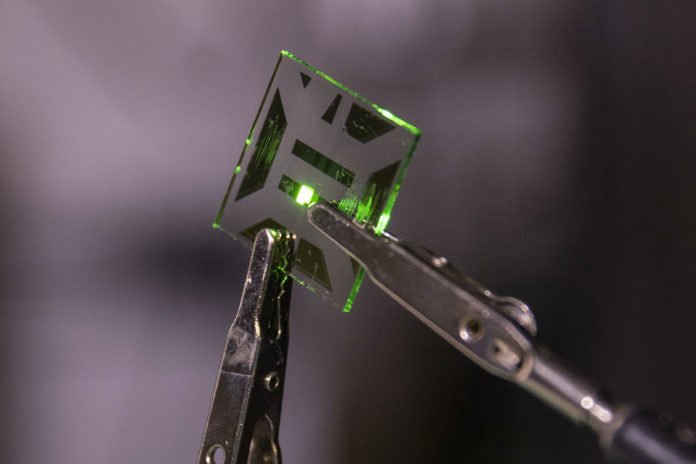University of Michigan researchers have developed a new electrode that could free up 20% more light from organic light-emitting diodes (OLED). The new nanotech OLED electrode could help extend the battery life of smartphones and laptops or make next-gen televisions and displays much more energy efficient.
Currently, about 80% of the light produced by an OLED gets trapped inside the device. It does this due to an effect known as waveguiding, where the light rays that don’t come out of the device at an angle close to perpendicular get reflected back and guided sideways through the device. They end up lost inside the OLED.
One of the biggest offenders is the transparent electrode that stands between the light-emitting material and the glass, typically made of indium tin oxide (ITO). The researchers replaced the ITO with a layer of silver just five nanometers thick, deposited it on a seed layer of copper, maintaining the electrode function while eliminating the waveguiding problem. This simple yet effective technique has also significantly enhanced the performance of the external quantum efficiency of the OLED.
“Untreated, it is the strongest waveguiding layer in the OLED,” said L. Jay Guo, U-M professor of electrical and computer engineering. “We want to address the root cause of the problem.”
“Industry may be able to liberate more than 40% of the light, in part by trading the conventional indium tin oxide electrodes for our nanoscale layer of transparent silver,” said Changyeong Jeong, a Ph.D. candidate in electrical and computer engineering.
Jeong and Guo’s solution is not only simple in the process but also can achieve high throughput and low cost with excellent compatibility with the large-scale manufacturing process in the display industry. According to the researchers, the new approach can also be successfully applied to other solid light-emitting diodes (LEDs) that are susceptible to the waveguide problem.
To prove that they had eliminated the waveguiding in the light-emitter, Guo’s team had to stop the light trapping by the glass, too. They achieved this with an experimental set-up using a liquid that had the same index of refraction as glass, a so-called index-matching fluid. They then look at their experimental set-up from the side and see whether any light was coming sideways. The team found that the edge of the light-emitting layer was almost completely dark. In turn, the light coming through the glass was about 20% brighter.
